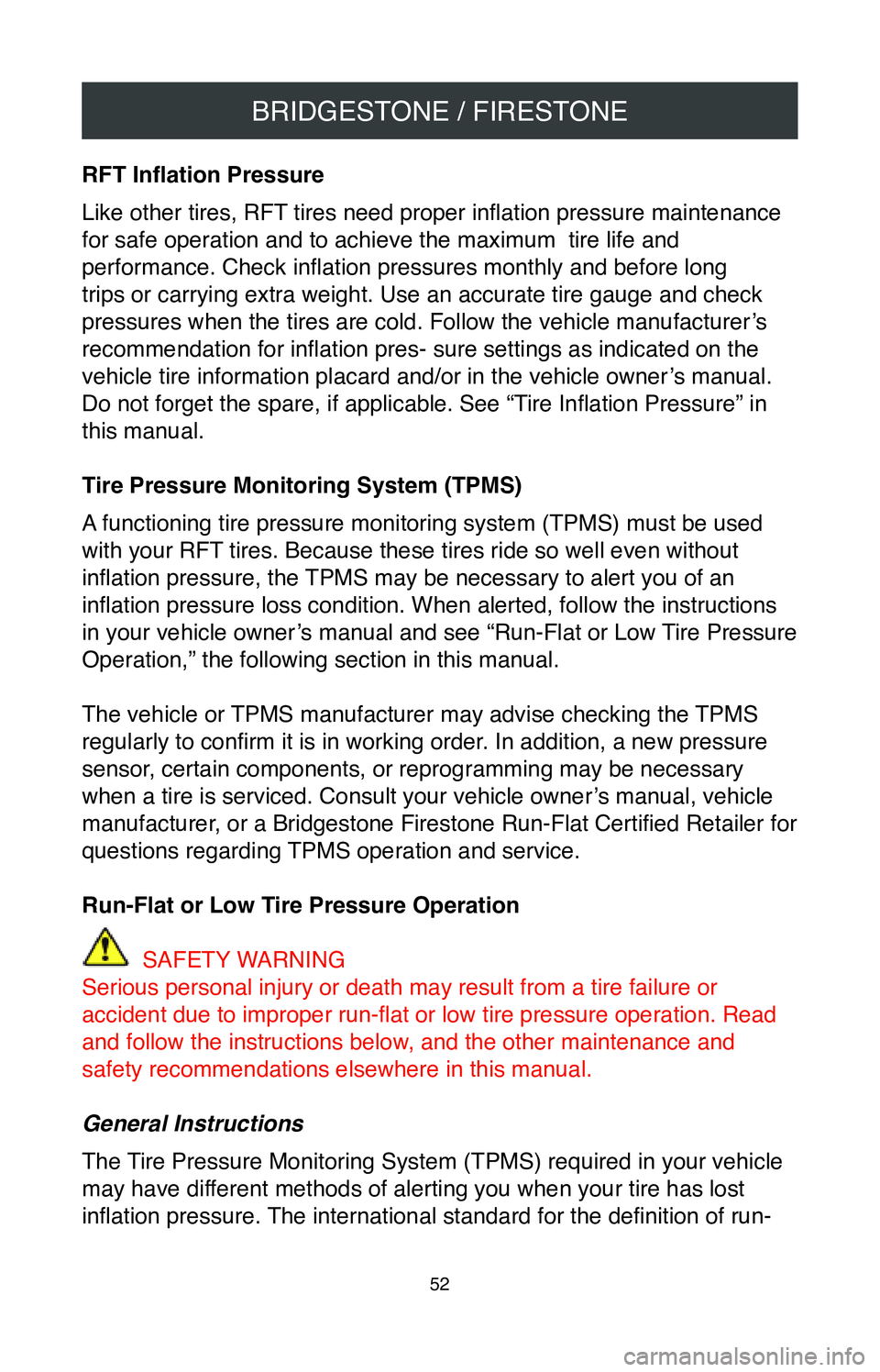BRIDGESTONE / FIRESTONE
52
RFT Inflation Pressure
Like other tires, RFT tires need proper inflation pressure maintenance
for safe operation and to achieve the maximum tire life and
performance. Check inflation pressures monthly and before long
trips or carrying extra weight. Use an accurate tire gauge and check
pressures when the tires are cold. Follow the vehicle manufacturer’s
recommendation for inflation pres- sure settings as indicated on the
vehicle tire information placard and/or in the vehicle owner’s manual.
Do not forget the spare, if applicable. See “Tire Inflation Pressure” in
this manual.
Tire Pressure Monitoring System (TPMS)
A functioning tire pressure monitoring system (TPMS) must be used
with your RFT tires. Because these tires ride so well even without
inflation pressure, the TPMS may be necessary to alert you of an
inflation pressure loss condition. When alerted, follow the instructions
in your vehicle owner’s manual and see “Run-Flat or Low Tire Pressure
Operation,” the following section in this manual.
The vehicle or TPMS manufacturer may advise checking the TPMS
regularly to confirm it is in working order. In addition, a new pressure
sensor, certain components, or reprogramming may be necessary
when a tire is serviced. Consult your vehicle owner’s manual, vehicle
manufacturer, or a Bridgestone Firestone Run-Flat Certified Retailer for
questions regarding TPMS operation and service.
Run-Flat or Low Tire Pressure Operation
SAFETY WARNING
Serious personal injury or death may result from a tire failure or
accident due to improper run-flat or low tire pressure operation. Read
and follow the instructions below, and the other maintenance and
safety recommendations elsewhere in this manual.
General Instructions
The Tire Pressure Monitoring System (TPMS) required in your vehicle
may have different methods of alerting you when your tire has lost
inflation pressure. The international standard for the definition of run-
